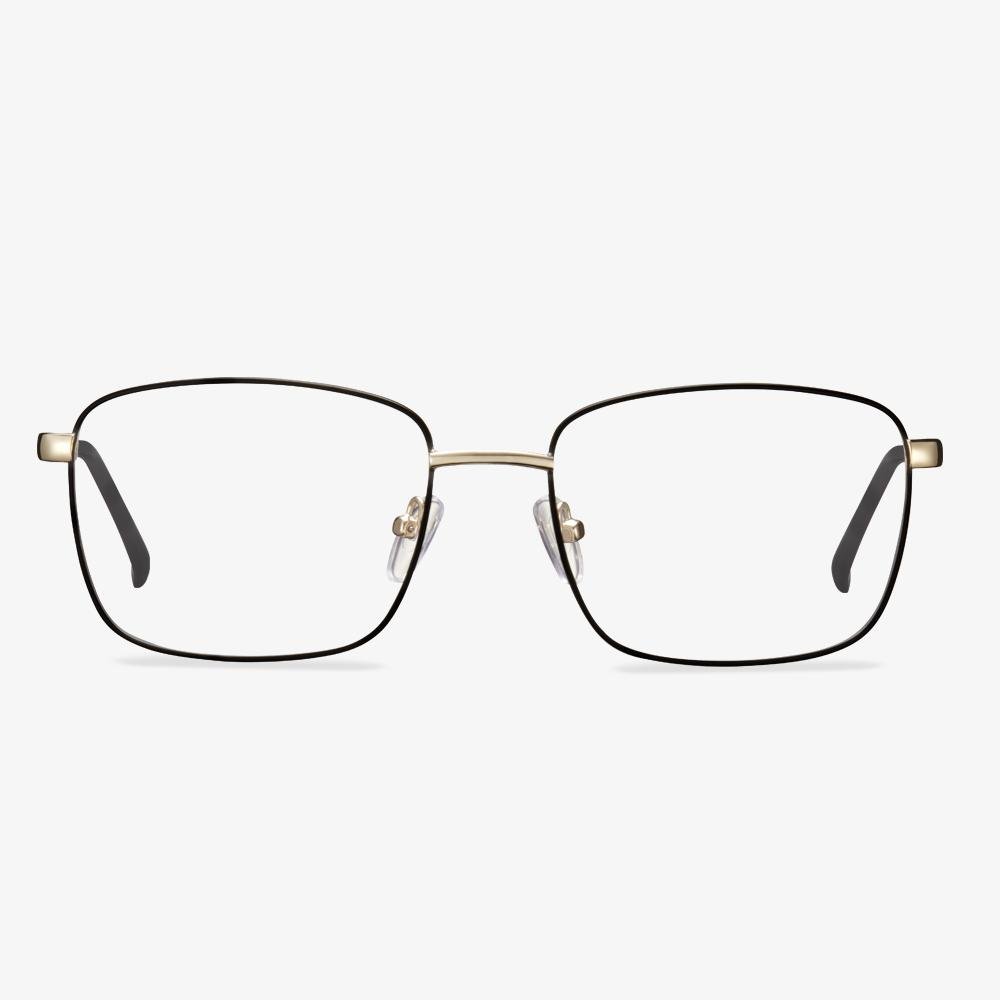Square face with round glasses
The square face belongs to the type of facial lines or tough, which looks a bit unnatural. For this type of face, it is best to choose round glasses because a round shape can make your facial lines softer and add a little femininity. The most suitable glasses for a square face are round, but the size of this round is also very particular. If you have a wider face, it is better to choose larger glasses, which can better modify the face and make the face smaller.
The Disadvantages of Polycarbonate Lens
In this section, we will show you the disadvantages of polycarbonate glasses.
First, the polycarbonate lens is expensive than other regular lenses. It can cost up to double the price of regular eyeglasses.
Second, compared with high-index lenses, polycarbonate glasses have a lower abbe value, which is used to measure the dispersion of light for different eyeglasses lens materials. Polycarbonate lens rates lower mean they have the potential to cause slight chromatic aberrations in your peripheral vision.
Third, compared with Trivex lens, polycarbonate lens has bad durability since they are thinner and lighter.
What is a drop ball test?
The Drop Ball Test, known as the Basic Impact Test, is an Impact Test administered by the Food and Drug Administration to determine the safety of eyeglasses. Eyeglasses (sunglasses, exercise glasses, near-sightedness glasses, reading glasses, etc.) are a category of medical devices covered by the Food and Drug Administration. When glasses are exported to the United States or put on shelves on Amazon,eBay, and other platforms, they need to be registered by FDA. Besides the product listing, when the product passes the customs, the company may be asked to produce a Certification Statement of Impact Resistance stating that the product meets 21CFR801.410 Drop Ball Test requirements.
The anti-reflection principle of the anti-reflection film
Anti-reflection Coating, known as anti-reflection membrane, is called anti-reflection coating in English, or AR membrane for short. The basis of anti-reflection is the wave and interference of light. The principle is: Two light waves with the same amplitude and the same wavelength are superimposed, then the light wave amplitude is enhanced. The two wavelengths and amplitudes are the same, but the superposition of wavelengths with different wave paths (similar to dislocation) cancels each other out. Therefore, the anti-reflection film plated on the surface of the lens uses this principle to make the reflected light generated by the front and rear surfaces of the film layer interfere with each other, thus canceling each other and achieving the effect of reducing reflection.
They can reduce glare.
They can absorb blue atmospheric scattering and provides more contrast. When performance is your top priority, the right lens tone can give you the results you want. UV rays are blocked by a special coating on the lenses. And inferior sunglasses not only cannot hold back ultraviolet rays but let lens permeable luminosity drops seriously, making pupil greens. Ultraviolet rays can shoot in large quantities instead, your eye is damaged.
Who need progressive lenses?
There is no limit to the degree of progressive multifocal lenses. Whether it is nearsightedness, presbyopia or moderate astigmatism, it can be worn, but not everyone can wear it. There are two types of progressive multifocal lenses on the market, one is hard and the other is soft. The main difference between the two designs is the length of the progressive channel. The rigidly designed progressive film has a short progressive path and relatively less peripheral aberrations. In order to ensure vision at various distances, fewer vertical dimensions are required. For example, a teenage progressive film belongs to this design, but because of its short gradual path, the gradation process is too short. Fast. Compared with the elderly, this design is more difficult to adapt; the soft design of the progressive film has a relatively long gradation channel and relatively large peripheral aberrations, but due to its long gradation channel, the gradation process is relatively smooth, which makes it easy to wear glasses It is suitable for people with poor adaptability.
If you are a person who is able and willing to accept new things, understand and adapt to the temporary discomfort caused by progressive addition lenses, we suggest that he can wear a pair, if he has severe hypertension, dizziness and other symptoms, or People who have misunderstandings about progressive lenses and are unwilling to adapt should not try them. Because you first wear progressive multifocal glasses, you may experience: slight dizziness, shaking when walking, and being careful when moving up the stairs.
The perception of space has changed, the perception of the distance of the object, and the perception of depth have changed. New wearers should not drive immediately and do strenuous exercise. When you look close, you need to turn your eyes down, and your eyes are mildly uncomfortable. Seeing an object through the blurred vision area around the lens makes the object blurred. Therefore, when new wearers look at things, turn their heads more, turn their eyes less, try to use the far-use zone, the near-use zone, and the middle-distance zone to see objects.
Choose the right lenses for blue light glasses.
Since visible light is made up of yellow, green, and blue light, the blue lens blocks the blue light, leaving only yellow and green light. Yellow plus green is yellow, so what we see is a yellow lens. If it is viewed from the side, we will find that the lens is also transparent, with no background color, and most of it is yellow-green. The dark yellow blue lens appears chromatic aberration, and it can be more serious. So to block blue light and do not hurt an eye again, you had better choose light yellow lenses to prevent blue light.











































